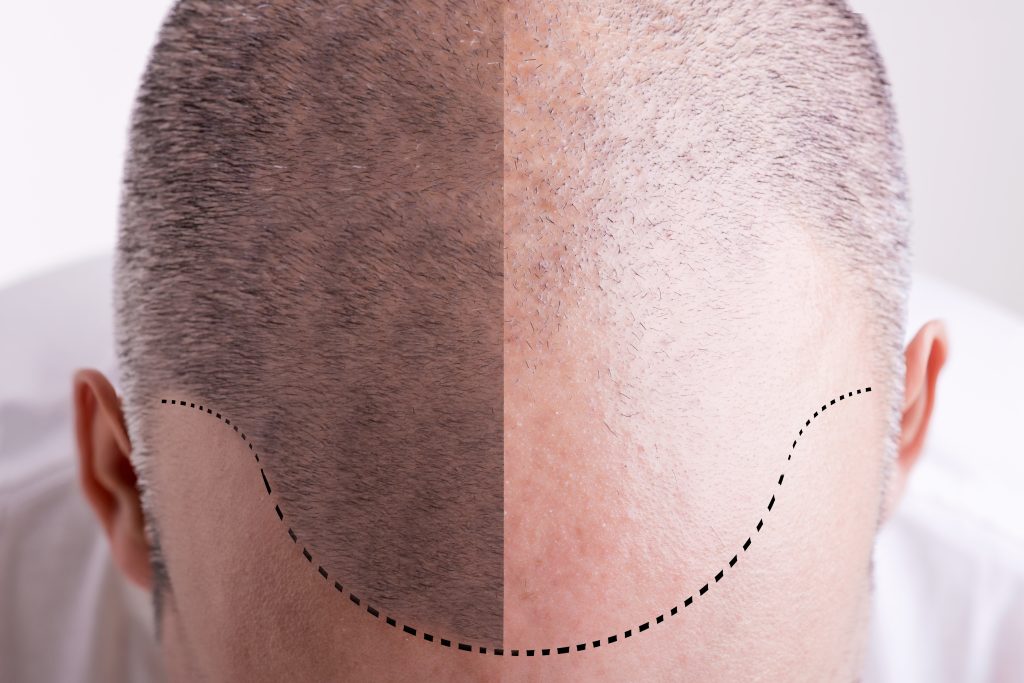This is why most men only lose their hair from the top of the head and not from round the back and sides. Hair transplantation is taking hairs from the horseshoe-shaped area and placing them in the area of hair loss. Once transplanted, these hairs continue to grow normally.
Over the years, the technique of hair restoration surgery has developed enormously. Hair grafts have become increasingly smaller and refined. They can be as small as one or two hairs. So that modern transplant techniques can produce a natural looking result, often indistinguishable from normal hair.
The donor hair needs to be taken from an appropriate area of the scalp where the hairs are quite thick. Before surgery, the practitioner may give you a mild tranquiliser to reduce anxiety and discomfort. Also, lignocaine (a local anaesthetic) and adrenaline (used to reduce bleeding) are then injected into the area of donor hair. Once collected, the individual grafts are prepared by a team of trained technicians.
The patient’s scalp is then anaesthetised (using either a nerve block, or a local injection of lignocaine) and the grafts are then placed into tiny incisions in the skin. The donor area can provide 1000-3000 follicles as a time and the process of graft insertion can take up to 4-8 hours to complete.



